Popular movies and books on “the Apocalypse” as well as the “prepper” movement reflect he general feeling that the world as we know it is coming to an end. But we have a more sure anchor in the biblical apocalyptic books of Daniel and the Revelation than can be found in any worldly resource. Below, we list some resources for studying these books. (Note that some resources for Daniel are mixed in with the resources for Revelation. ) Also see the following pages and posts:
Resources For Study of the Investigative Judgment | Sanctuary Study Resources
The lessons for the first quarter of 2010 were on the book of Daniel. You may download the full lesson quarterly for studying Daniel from Amazon in Kindle format. (See cover on left.) Main lesson author is Elias Brasil de Souza.
Elias Brasil de Souza hails from Brazil and is a director of the Biblical Research Institute. (You can check out some of his articles at the BRI by clicking on this link and searching on his name. )He is also a professor of Old Testament exegesis and theology at Andrews University, also wrote the companion book for the quarter’s Adult Bible Study Guide, Book of Daniel, in the Bible Bookshelf series, available in Kindle format. (See cover on right.)
Ellen White Notes for Daniel, January, February, March of 2020, (on left) is the Pacific Press version of Ellen White notes on Ezra and Nehemiah..
Sabbath School Lesson Comments by Ellen White on Daniel, edited by J. L. Malmede VanAllen. Each 96-page eBook contains one full page of reading for each day – no fillers or advertising, additional references for further study, and much more.
(Note: We get a small commission if you purchase books through any of our links.)
You can read Kindle books on whatever device you are using to read this. I like keeping books on my smart phone, because that way I can use spare minutes to good advantage.
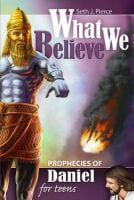
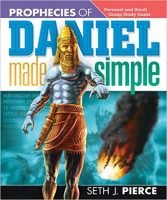 Perhaps you’ve enjoyed Seth Pierce’s book, What We Believe: Prophecies of Revelation for Teens.If so, you’ll also enjoy one of his books on Revelation. His book, What We Believe: Prophecies of Daniel for Teens follows a similar structure and is addressed to the same audience and will likely appeal to anyone not already familiar with the book because he explains concepts in contemporary language, even with a touch of humor now and then. (Print length 128 pages, published by Pacific Pres in 2012. Available in Kindle and Paperback format. )
Perhaps you’ve enjoyed Seth Pierce’s book, What We Believe: Prophecies of Revelation for Teens.If so, you’ll also enjoy one of his books on Revelation. His book, What We Believe: Prophecies of Daniel for Teens follows a similar structure and is addressed to the same audience and will likely appeal to anyone not already familiar with the book because he explains concepts in contemporary language, even with a touch of humor now and then. (Print length 128 pages, published by Pacific Pres in 2012. Available in Kindle and Paperback format. )
Pierce also wrote Prophecies of Daniel Made Simple, published by Pacific Press in 2014. It appears to be available only in paperback format and is likely very similar to Prophecies of Daniel for Teens.  “Using interesting illustrations and thoughtful questions, author Seth Pierce will make the symbolism clear, clarify the unfamiliar terms, and explain what the prophecies meant for the prophet Daniel and what they have to say to us today.”
“Using interesting illustrations and thoughtful questions, author Seth Pierce will make the symbolism clear, clarify the unfamiliar terms, and explain what the prophecies meant for the prophet Daniel and what they have to say to us today.”
Another book by Pierce is a book of historical fiction, entitled The Watchers. It is set in the time of Daniel, near the end of the 70 years: “The Watchers follows Caleb, Tamzi, their families, Allamu the blind beggar, and the old prophet Daniel, as before their very eyes the mighty kingdom of Babylon is overthrown by Cyrus and his Medo-Persian army. Was this the beginning of the end for the Babylonian Jews or the sign of a new beginning? ” It’s a book to give to one of your young people, and you can sneak-read it first! (Nothing like a good story to help you feel what it was really like to live in the time of Daniel the prophet.)
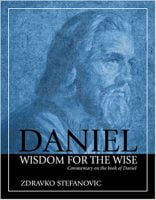 Daniel: Wisdom for a Wise, by Zdravko Stefanovic, Pacific Press, 2007. Provides an overview of Adventist thought on the interpretation of the book of Daniel which provides much of the symbolism used in the Revelation. Not available in Kindle format.
Daniel: Wisdom for a Wise, by Zdravko Stefanovic, Pacific Press, 2007. Provides an overview of Adventist thought on the interpretation of the book of Daniel which provides much of the symbolism used in the Revelation. Not available in Kindle format.
Jacques B. Doukhan is an Adventist scholar of Jewish heritage. He is currently (2019) Professor of Hebrew and Old Testament Exegesis at Andrews University and Director of the Institute of Jewish-Christian Studies.
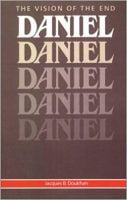 Daniel: The Vision of the End, by Jacques B. Doukhan, 1987. The author analyzes Daniel primarily from a literary point of view, which will greatly enhance our understanding of Daniel, particularly Daniel’s seventy-week prophecy. The book of Daniel is Hebrew poetry, and understanding the structure of Hebrew poetry is key to understanding Daniel
Daniel: The Vision of the End, by Jacques B. Doukhan, 1987. The author analyzes Daniel primarily from a literary point of view, which will greatly enhance our understanding of Daniel, particularly Daniel’s seventy-week prophecy. The book of Daniel is Hebrew poetry, and understanding the structure of Hebrew poetry is key to understanding Daniel
This is best read before Secrets of Revelation: The Apocalypse Through Hebrew Eyes because many of the symbols used in The Revelation are rooted in the Old Testament, particularly the book of Daniel. Out of print, and only available in hard copy.
Secrets of Revelation: The Apocalypse Through Hebrew Eyes, Jacques B. Doukhan, 2002. “Through Hebrew Eyes” promises another facet of The Revelation. Apparently Doukhan sees the book organized as a Menorah of Jewish feasts, drawing references from throughout the Bible to support his thesis. (I just wish this were available in electronic format, as I prefer to read on my phone.)
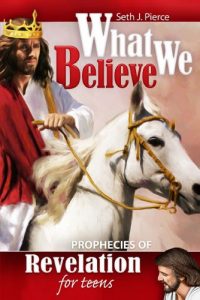 If Revelation scares or confuses you a bit, we recommend this really great book originally designed for teens but with enough content for any of us, What We Believe: Revelation for Teens, by Seth J. Pierce, written in an engaging style provides a good introduction to Revelation for teens and adults alike. Jon Paulien notes that “Seth Pierce lightens the complexity [of Revelation] with hilarious anecdotes and analogies and provides just enough substance that many tees who read the book will be tempted to go deeper. This book is like none other on the subject.” Cindy Tutsch notes that “His lead-ins may be uncoventional, but the core of his message is pure, time-tested gold.” That said, not everyone will like this approach, and the Amazon Kindle edition will allow you to check it out and return it for a refund if you don’t like it.
If Revelation scares or confuses you a bit, we recommend this really great book originally designed for teens but with enough content for any of us, What We Believe: Revelation for Teens, by Seth J. Pierce, written in an engaging style provides a good introduction to Revelation for teens and adults alike. Jon Paulien notes that “Seth Pierce lightens the complexity [of Revelation] with hilarious anecdotes and analogies and provides just enough substance that many tees who read the book will be tempted to go deeper. This book is like none other on the subject.” Cindy Tutsch notes that “His lead-ins may be uncoventional, but the core of his message is pure, time-tested gold.” That said, not everyone will like this approach, and the Amazon Kindle edition will allow you to check it out and return it for a refund if you don’t like it.
The Sabbath School lessons of the first quarter of 2019 are devoted to the study of The Revelation. And you may find much help in these lessons. Thus we are including the lessons and companion book below.
Ranko Stefanovic, professor of New Testament, specializing in the book of Revelation, in the Seventh-day Adventist Theological Seminary of Andrews University. He is the primary author of the lessons on the Book of Revelation for the first quarter of 2019. You may download the full lesson quarterly for studying The Book of Revelation from Amazon in Kindle format. He wrote a companion book on the same topic, The Book of Revelation in the Bible Bookshelf series, which is available in Kindle format. Revelation of Jesus Christ: Commentary on the Book of Revelation.
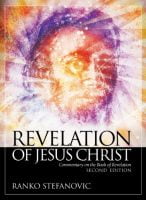
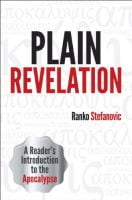 If you want to dig deeper with the same author, you can do so with the verse-by-verse commentary aimed at both college students and lay people, Revelation of Jesus Christ, by Ranko Stefanovic.
If you want to dig deeper with the same author, you can do so with the verse-by-verse commentary aimed at both college students and lay people, Revelation of Jesus Christ, by Ranko Stefanovic.
If you are new to Revelation, you many enjoy an earlier volume by Stefanovic, described as a “concise reader’s introduction to Revelation” that “makes it all plain and simple, leading readers chapter by chapter, section by section, scene by scene through this amazing panorama of cosmic war and glory.” It goes by the title, Plain Revelation, Andrews University Press, 2013. 296 pages. (Consider that this is about 125 pages more than most of Jon Paulien’s books below.)
Official SDA Bible Commentary

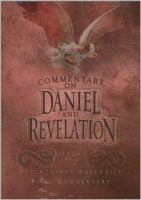 Volume 7 of the official Seventh-day Adventist Bible Commentary published in 1957. Includes commentary on Philippians, Colossians, 1 & 2 Thessalonians, 1 & 2 Timothy, Titus, Philemon, Hebrews, James, 1 & 2 Peter, 1, 2 & 3 John, Jude and Revelation, along with supplementary articles. Alternately, the commentary on Daniel and Revelation, from Volumes 4 & 7, has been bound into one volume for a more affordable option. (Also here and here.)
Volume 7 of the official Seventh-day Adventist Bible Commentary published in 1957. Includes commentary on Philippians, Colossians, 1 & 2 Thessalonians, 1 & 2 Timothy, Titus, Philemon, Hebrews, James, 1 & 2 Peter, 1, 2 & 3 John, Jude and Revelation, along with supplementary articles. Alternately, the commentary on Daniel and Revelation, from Volumes 4 & 7, has been bound into one volume for a more affordable option. (Also here and here.)
Teachers’ Comments & More by Jon Paulien
Jon Paulien wrote the Teacher’s Edition Notes on The Revelation lessons of the first quarter of 2019. (You can find the Teacher’s Edition of the Adult Bible Study Guide by clicking on the link searching for 2019 First Quarter and Teacher’s Edition.) He is currently dean of the school of religion at Loma Linda University. Before that, he was Professor of New Testament Interpretation at Andrews University Theological Seminary. He takes special interest in The Revelation, as attested by his blog, Revelation-Armageddon.com. On his blog he is posting the pre-edited Teacher’s Edition Notes as he submitted them for those who are interested. (Both the lessons and the teacher’s notes are heavily edited by committees before publication. Thus you can get a little glimpse of what goes on behind the scenes on Paulien’s blog.) Below are links to some of the books he wrote on the Revelation.
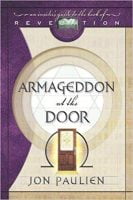 Armageddon at the Door, by Jon Paulien, Autumn House Publishing, 2008. Brief volume which appears to be aimed at the general public which is interested in “Armageddon.” Paulien knows how to communicate in everyday language, and he provides an overview of the book of Revelation, finding many clues to its meaning in the rest of Scripture. He explains the real meaning of the biblical Armageddon.
Armageddon at the Door, by Jon Paulien, Autumn House Publishing, 2008. Brief volume which appears to be aimed at the general public which is interested in “Armageddon.” Paulien knows how to communicate in everyday language, and he provides an overview of the book of Revelation, finding many clues to its meaning in the rest of Scripture. He explains the real meaning of the biblical Armageddon.
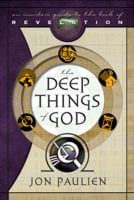 The Deep Things of God, by Jon Paulien, 2004. In this small volume, Paulien provides a quick survey of prophecy from Genesis to Revelation. Then he demonstrates hidden patterns of God’s working in history, how prophets move from literal to spiritual, how they use the language of the past to describe the future, and how they employ literary structures, such as chiasm, as clues to their meaning.
The Deep Things of God, by Jon Paulien, 2004. In this small volume, Paulien provides a quick survey of prophecy from Genesis to Revelation. Then he demonstrates hidden patterns of God’s working in history, how prophets move from literal to spiritual, how they use the language of the past to describe the future, and how they employ literary structures, such as chiasm, as clues to their meaning.
“The author demonstrates how the structure of the Hebrew sanctuary, extracanonical writings, and even a pagan goddess can help us unlock the secrets of Revelation. He explains how Ellen G. White relates to Scripture, and how careful attention to Old Testament roots sheds new light on topics such as the meaning of 666.”
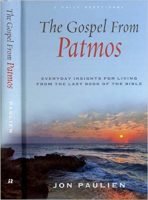 You’ll find something a little different in this devotional, The Gospel from Patmos, drawing thoughts from the book of Revelation. In this book, published in 2007, Paulien demonstrates his conviction that prophecy is not given to satisfy our curiosity, but to teach us how to live today. Thus he focused on what the Revelation tells us about Jesus and how to live in the world today as His people.
You’ll find something a little different in this devotional, The Gospel from Patmos, drawing thoughts from the book of Revelation. In this book, published in 2007, Paulien demonstrates his conviction that prophecy is not given to satisfy our curiosity, but to teach us how to live today. Thus he focused on what the Revelation tells us about Jesus and how to live in the world today as His people.
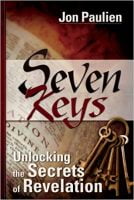 Seven Keys: Unlocking the Secrets of Revelation, Jon Paulien, 2009. In this small, readable volume, Paulien focuses on simplifying what may at first seem overwhelming in the book of Revelation. Readers report that “It makes the difficult concepts in the book understandable. “
Seven Keys: Unlocking the Secrets of Revelation, Jon Paulien, 2009. In this small, readable volume, Paulien focuses on simplifying what may at first seem overwhelming in the book of Revelation. Readers report that “It makes the difficult concepts in the book understandable. “
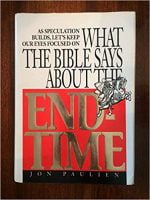 What the Bible Says About the EndTime by Jon Paulien, 1994. In this book Paulien explains how the different writers of the Bible saw the end of time – during pre-flood, patriarchal, Davidic, Babylonion captivity, intertestamental times, and New Testament periods. This grand overview should help us understand both the Bible and the end of time.
What the Bible Says About the EndTime by Jon Paulien, 1994. In this book Paulien explains how the different writers of the Bible saw the end of time – during pre-flood, patriarchal, Davidic, Babylonion captivity, intertestamental times, and New Testament periods. This grand overview should help us understand both the Bible and the end of time.
Adventist Pioneer Resources
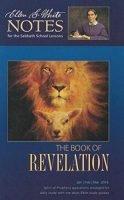 Ellen White Notes for The Book of Revelation, first quarter of 2019, Pacific Press version. The “official” version of Ellen White comments on the Adult Bible Study Guide..
Ellen White Notes for The Book of Revelation, first quarter of 2019, Pacific Press version. The “official” version of Ellen White comments on the Adult Bible Study Guide..
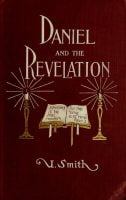 Our interpretation of Daniel and the Revelation has usually rested on the book, Daniel and the Revelation, by Uriah Smith published during Ellen White’s lifetime. She was happy about the book’s publication and wrote that it was exactly what God wanted. What some forget is that what God wants in certain circumstances may not be the same as what He wants in other circumstances. The book was as right for the time as Seventh-day Adventists then could make it. But Ellen White also wrote that there was more to learn in those books. And the Holy Spirit continues to reward the earnest student.
Our interpretation of Daniel and the Revelation has usually rested on the book, Daniel and the Revelation, by Uriah Smith published during Ellen White’s lifetime. She was happy about the book’s publication and wrote that it was exactly what God wanted. What some forget is that what God wants in certain circumstances may not be the same as what He wants in other circumstances. The book was as right for the time as Seventh-day Adventists then could make it. But Ellen White also wrote that there was more to learn in those books. And the Holy Spirit continues to reward the earnest student.
Smith’s book is still an excellent source for the historical sections of the Revelation. History buffs, particularly, will be sure to enjoy it. It is now available in Kindle format too. (You may find a good buy on a hard copy at AbeBooks.)
As editor of Daniel and the Revelation, Uriah Smith used and edited material contributed by others. What most of us don’t know is that the material on Revelation 4 and 5 was not written by a Seventh-day Adventist. Apparently the book was finished, except for that section, but no Seventh-day Adventist was ready to contribute material on those chapters. Then Smith heard of a first-day Adventist who had put together material on Revelation 4 and 5, and that material was used to fill in that section. 1
You may wonder what difference that makes. The answer hinges on the fact that Seventh-day Adventists have a unique understanding of the heavenly sanctuary that provides the backdrop for all of the Revelation scenes. Not understanding the sanctuary is bound to hinder a correct interpretation of the scenes. 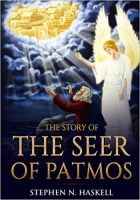 However, with the understanding that the sanctuary backdrop provides clues to the timing of events in the book, we can enter on a rich road of discovery, guided by the Holy Spirit.
However, with the understanding that the sanctuary backdrop provides clues to the timing of events in the book, we can enter on a rich road of discovery, guided by the Holy Spirit.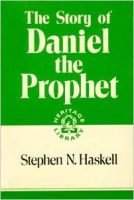
Stephen Haskell, another one of our early pioneers also wrote a relevant book entitled, The Story of the Seer of Patmos, with a more devotional approach than Smith’s book. You can read it in hard copy or electronic format. There are even a few original editions out there. (Check out AbeBooks.)
Haskell also wrote The Story of Daniel the Prophet, and that reminds me that 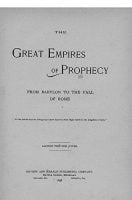 Ellen White said that the two books should be studied together, and we’re all free to do that on our own.
Ellen White said that the two books should be studied together, and we’re all free to do that on our own.
The Great Empires of Prophecy from Babylon to the Fall of Rome, by Alonzo Trevier Jones, dynamic speaker and champion of religious liberty in the times of Ellen White. History doesn’t change over time, and A. T. Jones was no history slouch. 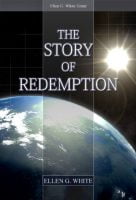 This would seem to provide historical background particularly for the book of Daniel. The book is available in paperback and Kindle versions, and the Kindle version appears to be well executed, rather than an awkward “facsimile” reproduction.
This would seem to provide historical background particularly for the book of Daniel. The book is available in paperback and Kindle versions, and the Kindle version appears to be well executed, rather than an awkward “facsimile” reproduction.
Since both Daniel and the Revelation deal with the great conflict between our Creator and the rebel angel who tried to usurp His throne, an overview of this conflict helps to put things in perspective. And there’s no better book to provide this overview than The Story of Redemption by Ellen G. White. It’s a fairly short book, considering its content, and a really great read – one of my all-time favorite books.
Views from the 20th and 21st Century
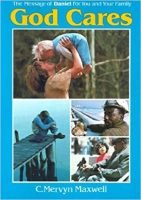 The late C. Mervyn Maxwell (who shared the story of the background of the source material of Smith’s book on Rev 4 & 5) was chairman of the department of church history and professor of church history in the Seventh-day Adventist Theological Seminary at Andrews. Among other books, he wrote The Message of Daniel (God Cares, Vol 1) and God Cares: The Message of Revelation for You and Your Family (God Cares Vol. 2) If the books are sold by the time you follow this link, you may find other copies on Amazon or on AbeBooks, where used books are often less expensive. (Note that the images and the titles link to different bindings of the books, and there are more available. Unfortunately they are not available in electronic format.)
The late C. Mervyn Maxwell (who shared the story of the background of the source material of Smith’s book on Rev 4 & 5) was chairman of the department of church history and professor of church history in the Seventh-day Adventist Theological Seminary at Andrews. Among other books, he wrote The Message of Daniel (God Cares, Vol 1) and God Cares: The Message of Revelation for You and Your Family (God Cares Vol. 2) If the books are sold by the time you follow this link, you may find other copies on Amazon or on AbeBooks, where used books are often less expensive. (Note that the images and the titles link to different bindings of the books, and there are more available. Unfortunately they are not available in electronic format.)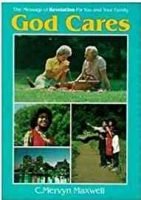
We have Uriah Smith’s book as well as Maxwell’s books, and I believe Maxwell’s books are still some of the best material available on the books of Daniel and the Revelation. I especially appreciate that he focuses on Jesus Christ, rather than on “beastly” history, although he certainly references history. Yet those books aren’t “perfect” either. The Holy Spirit is just as willing to enlighten you and me as a professor at a Seventh-day Adventist University. And I think that’s an exciting prospect!
| You can read Kindle books on whatever device you are using to read this. I like keeping books on my smart phone, because that way I can use spare minutes to good advantage. Enjoy! |
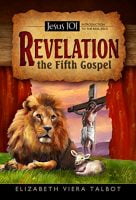 Jesus 101: Revelation the Fifth Gospel, by Elizabeth Viera Talbot, offers another unconventional but illuminating approach to the book of Revelation. If you have watched some of Talbot’s sermons online you know that she loves to use visuals, including dolls, to bring her message home. This book demonstrates that she is skilled with verbal illustrations as well, while always keeping her focus on Jesus.
Jesus 101: Revelation the Fifth Gospel, by Elizabeth Viera Talbot, offers another unconventional but illuminating approach to the book of Revelation. If you have watched some of Talbot’s sermons online you know that she loves to use visuals, including dolls, to bring her message home. This book demonstrates that she is skilled with verbal illustrations as well, while always keeping her focus on Jesus. 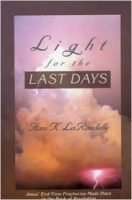
Light for the Last Days: Jesus’ Endtime Prophecies Made Plain in the Book of Revelation, by Hans K. Larondelle. We used to attend a Sabbath School class at Andrews University by the late Dr Larondelle a few eons ago. He never failed to challenge us. A staunch defender of the historicist method of interpreting prophecy, he dismisses some of the arguments by futurists and preterists, as he lays out the prophetic scenario based on Matthew, Daniel and Revelation . (Book is unfortunately not available in Kindle format.)
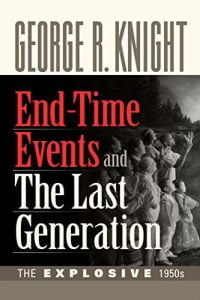 George Knight‘s book, End-Time Events and the Last Generation is not a study of the book of Revelation, per se. But Knight, a church historian, explores issues surrounding the end-time that are current in Adventism, such as
George Knight‘s book, End-Time Events and the Last Generation is not a study of the book of Revelation, per se. But Knight, a church historian, explores issues surrounding the end-time that are current in Adventism, such as
In this probing book George Knight explores the following:
• Why does Jesus wait?
• Does the last generation have anything to do with the delay?
• What about the 1888 message of A. T. Jones and E. J. Waggoner?
• What was the significance of Questions on Doctrine?
• How have the 1950s shaped Adventism’s continuing journey?
You may also find something helpful on our Endtime Resources Page.
Links to Amazon are listed above, but sometimes you may have better luck searching for out-of-print books at AbeBooks.com
And, of course, you can always check out your local Adventist Book Center or visit the Adventist Book Center online.
- These details of the source of Smith’s Daniel and Revelation were shared in person by Mervyn Maxwell. ↩

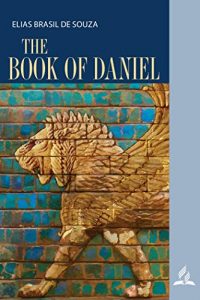

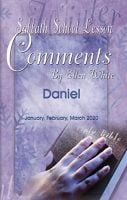
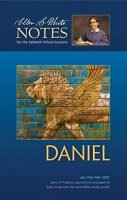
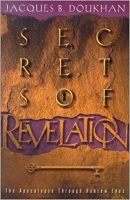
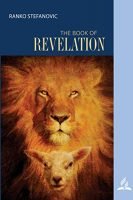
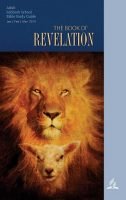
Comments
Apocalypse Resources — No Comments
Please make sure you have provided a full name in the "Name" field and a working email address we can use to contact you, if necessary. (Your email address will not be published.)
HTML tags allowed in your comment: <a href="" title=""> <abbr title=""> <acronym title=""> <b> <blockquote cite=""> <cite> <code> <del datetime=""> <em> <i> <q cite=""> <s> <strike> <strong>